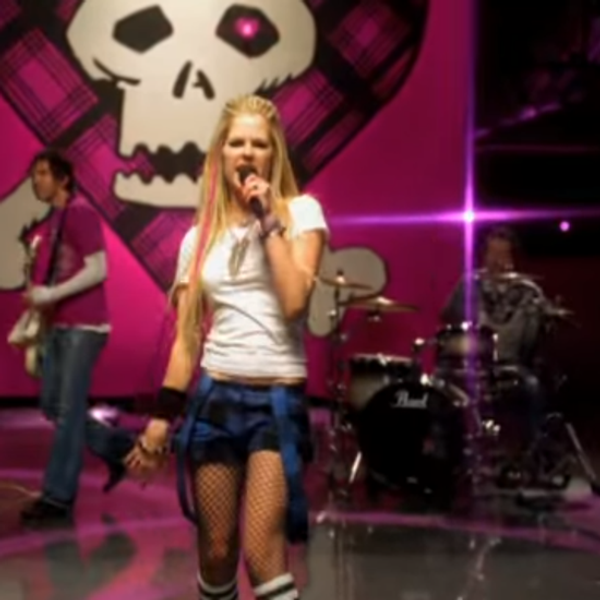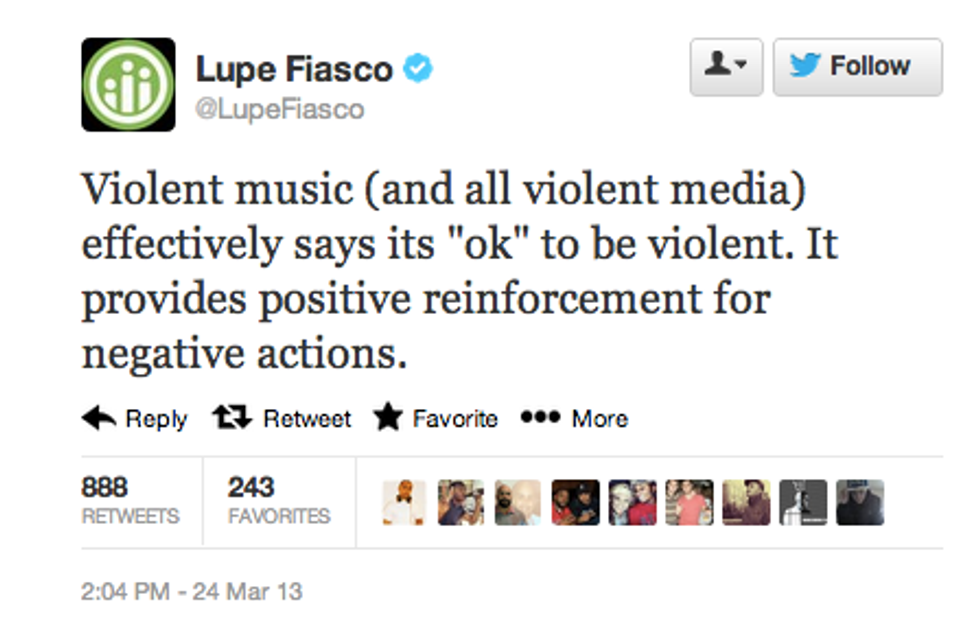Perhaps only politicians could give hip-hop a run for its money when it comes to degrading rhetoric about women. At least politicians experience some sort of pushback. Hip-hop, it seems, is impervious to the sporadic attempts to address issues of sexism; a war of words is hard to win against the genre that invented the rap battle. Perhaps this is because of the one-sidedness surrounding the issue. Discussions about perceived moral depravity in hip-hop are often written from the perspective of those not involved with the genre or its socio-political landscape. Therefore, it is necessary to be discerning when discussing misogyny in hip-hop. Addressing the issue should not be a practice in teaching what is right and what is wrong; it should be a discussion surrounding both the rhetoric used and the matrix in which this rhetoric is accepted and allowed to grow.
The Rhetoric
Unfortunately, searching for hip-hop lyrics degrading to women is a quick and easy task. Examples abound, and even when there is pushback, apologies are lackluster and fail to address the issue. Rappers apologize like NFL players apologize.
On U.O.E.N.O. Rick Ross raps, “Put Molly all in her champagne, she ain’t even know it; I took her home and I enjoyed that, she ain't even know it.” This line actually did receive substantial criticism for its blatant posturing about date rape, yet Ross’ response was less than reassuring. His apology includes a reference to “all the sexy ladies, the beautiful ladies,” a further commodification of women. He attempts to further himself from the issue by reminding people that he never used the term “rape” in the lyric as if only explicit rhetoric can do damage.
Drake’s “Hotline Bling” is a practice in low-key, passive sexism. Without delving too far into the song’s meaning, let’s examine just a couple of bars: “Used to always stay at home, be a good girl. You was in the zone, yeah.” This section of the bridge reads like an ode to the Cult of True Womanhood, or the classic 1950s stay-at-home-mom. Drake, attempting to remind his girl of how good it all was, places her in a submissive waiting game, a stay-here-till-I-get back role that dismisses Drake’s own womanizing. He’s allowed to (wear less) and go out more, but she isn’t awarded the same liberty.
Without even referencing women directly, rappers manage to be degrading. Take, for example, the often-used term “pussy n****.” Used as a way to bring down other rappers, the term inherently attaches lyrical inability or a lack of street credibility to feminine characteristics. As trivial as that may sound, rhetoric compounds, rhetoric informs. The more artists tie femininity to inability, the more we will see those values reflected on a larger scale.
The most visceral and upsetting type of misogyny in hip-hop is marked by sexual violence. Jay Roc is going to “beat the pussy up.” Young Thug “beat the pussy up.” Rich Homie Quan’s girls are all scared of him because he “put[s] that rod in ‘em.” Vic Mensa, in one of the more depraved and ill-advised lyrics of the year, raps, “but if she bad I might hit a bitch in the elevator like Ray Rice.” The implications are clear; Vic is going to have sex with a woman in an elevator, but his rhetoric evokes violence. Worse, he references an explicit violent incident without any regard for how terrible it really was. Sexual violence is pervasive in rap. That is not to say that there aren't respectful approaches to sex and love in rap; rap’s scope means that anything is possible. Yet in mainstream hip-hop, approaches to sex promote unbalanced ideas of pleasure, respect, and sexuality.
The implications of misogyny in hip-hop are far-reaching. It has become a genre with listeners in the millions. It is powerful both politically and socially. It informs values, provides social cues, and helps inform how people interact. It is the poetic footprint of multiple decades. For these reasons, its rhetoric needs to become more inclusive. We often talk about a lack of female rap artists. Those few women that do experience mainstream success often must adhere to the rules of patriarchal rhetoric. If hip-hop were to curb its language, perhaps we would see a rise in female artists. Intellectuals, writers, and college students often toss about the word "inclusivity" with mixed reactions (apparently we’re all too sensitive now). But it remains an important word when discussing how hip-hop will grow. If the genre is to experience any forward growth, artists must respect the fact that rap is not homogeneous, and female artists need to be allowed to enter the foray.
A few searches on Rap Genius and some Spotify cruising gave us a plethora of examples for backing the assertion that rap is misogynistic. Yet it isn't sufficient to discuss this issue using the easy tactics. It is necessary to also understand why rap rhetoric is the way it is. For that, we need to address the socio-political matrix in which rap has developed, and the business it has become.
Rap Doesn't Grow In A Vacuum
Critiques of hip-hop often read as if hip-hop exists in a vacuum; as though rappers write questionable lyrics because, well, they're morally inept. That approach denies centuries of history that inform not only hip-hop’s largest constituency, black Americans, but also the white role in this history.
In their piece “Black Women and Black Men in Hip Hop Music: Misogyny, Violence and the Negotiation of (White-Owned) Space,” published in the Journal of Popular Culture, Guillermo Rebollo-Gil and Amanda Moras argue that “any analysis [of misogyny] that does not simultaneously discuss the racist, patriarchal, capitalist hierarchy within which rap exists does not move the music toward liberatory practice.” Commercially successful hip-hop is most often driven by what is commercially appealing. As Rebello-Gil and Moras argue, it is “larger, white-owned corporations [that] continue to control the music’s distribution channels,” which see stereotypes of uber-sexual and violent black men as marketable. Sexual and violent lyrics are what sell, and therefore, it is sexual and violent music that sees commercial success.
Rebollo-Gil and Moras argue that gender relations and patriarchy within the black communities from which most rap music comes from are greatly influenced by white perceptions of people of color. White culture has long identified people of color as exotic, erotic, and violent. In a white-dominated society, these stereotypes have been grafted onto people of color, informing how they are perceived socially and culturally, creating institutionalized racism. Because these stereotypes become “fact,” they add levels of “truth” to lyrics about violence and over-sexualization that make these things marketable. It isn’t just true when discussing black men; black women are defined as “baby mamas” and “freaks,” rhetoric that allows mistreatment. Western-centric definitions of blackness have come to inform how we perceive rap music and how we digest it. Therefore, oversexualized and violent lyrics, or simply lyrics that lack respect toward women, are not only commercially successfully, they’re “honest.” They portray what dominant groups have formalized as true while betraying the real experiences of black America and failing to help redefine marginalized communities. Working from false definitions of sexuality and blackness, rap music has grown to fit a mold that it was forced into. Cracking the seams of that mold is now the responsibility of those who love the genre.
This is a nuanced issue. Yet it isn’t hard to understand. Although hip-hop is home to a considerable amount of misogyny, blame cannot be leveled at only the artists. What is seen as a black-centric genre is in reality run by white-owned corporations on a commercial level. It is these corporations, working with Western-centric definitions of blackness, that determine what sells, and therefore what goes into songs. We cannot pretend that rap exists in a vacuum of sex and violence. Its lyrics can also be vibrant and uplifting; honest and gritty. Rap fans love some level of beef, some level of posturing, some level of sexuality. But let us not promote extremes. Let us not accept rhetoric that demeans and hurts. Be discerning listeners and readers, and understand the circumstances in which rap music grows.























